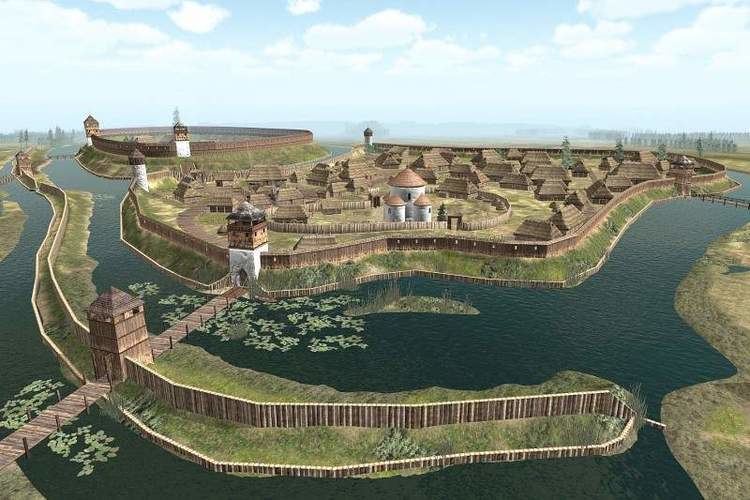 | ||
In the turn of 10th and 11th century the territory of Cherven Cities or Cherven Towns Ukrainian: Червенські городи, Polish: Grody Czerwieńskie) was a point of dispute between the Kingdom of Poland and Kievan Rus', each claiming its own rights to the land. Finally it became a part of Ruthenia. In English texts these often literally translated as Red Cities/Red Towns.
History
Originally, the name "Cherven Cities" probably identified a territory between the Bug and Wieprz rivers. Its name is derived from Cherven (cf. Proto-Slavic *čьrvenъ "red"), a gord that existed there, possibly on the site of the present village of Czermno.
In early medieval times, Slavic tribes, the Vyatichi and Radimichs, settled in this area. Nestor (c. 1056 – c. 1114), the reputed author of the Primary Chronicle, refers to the Vyatichi and Radimichs as Lachy (Lendians). From the mid-950s onward, the Lendians were politically anchored in the Bohemian sphere of influence. Cosmas of Prague (c. 1045 – 1125) relates that the Přemyslid rulers of Bohemia controlled the land of Kraków until 999. In support of Cosmas, the foundation charter of the Archdiocese of Prague (1086) traces the eastern border of the archdiocese, as established in 973, along the Bug and Styr (or Stryi) rivers. Abraham ben Jacob, who travelled in Eastern Europe in 965, remarks that Boleslaus II of Bohemia ruled the country "stretching from the city of Prague to the city of Kraków".
At one point in the 970s, Mieszko I of Poland apparently took over the region: the Primary Chronicle infers this when reporting that Vladimir I of Kiev conquered the "Red Cities" from the Poles in 981. Vladimir of Kievan Rus' took over the Red Ruthenian strongholds in his military campaign on the border with the land of Lendians. Nestor reports in his chronicle that: "Vladimir marched upon the Lyakhs (k Lyakbotri) and took their cities: Peremyshl (modern Przemyśl), Cherven (modern Czermno), and other towns".
In 1018 Poland retook the area; in 1031 it fell again to Rus'.
The Rus'ian expedition against Poland (1030–1031) had as its object not only the recovery of territories previously lost (1018); it also delivered a powerful blow against the Polish Metropolis of Slavonic rite.
In 1031 Harald and his men reached the land of the Kievan Rus, where they served the armies of Yaroslav I the Wise, the Grand Prince of the Rus, whose wife Ingigerd was a distant relative of Harald. In the spring 1031, where he became chief of Yaroslav's bodyguard jointly with Eilifr, son of that Rognvaldr who had originally come to Novgorod with Ingigerd. Harald served a military apprenticeship, fighting in the Polish campaign of 1031, and against the "Læsir" people.
